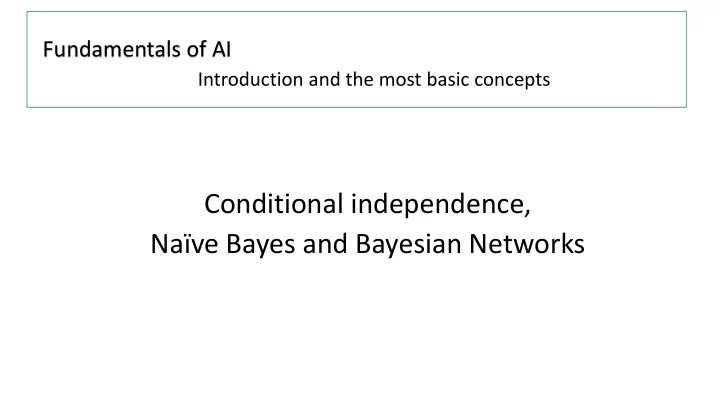

Fundamentals of AI Introduction and the most basic concepts Conditional independence, Naïve Bayes and Bayesian Networks
Jo Joint Probability Distribution ‘Banana -shaped probability distribution’ • Probability of any combination of features to happen Conditional Probability Bayes rule Probability density function (PDF)
Event M The story of Andrew (Moore) and Manuela True False Event S True False
Most probable 0.18 0.42 0.12 0.28
Event M False True Event S False True Event L False True
Event R True False
Example from real-life
Example from real-life
Example from real-life
Now, what is naïve Bayesian assumption ? • In simple words, it assumes that all variables (or a set of variables) are all conditionally independent : the Bayesian net is not connected • Or, we have an unconnected Bayesian net connected to a single node x,y,z,t are conditionally independent given C C This construction can be used to predict C from x,y,z,t values: this is Naïve Bayes classifier x y z t
What you should take with you • Conditional independence of evens given other events • Bayesian networks: convenient graphical way to represent known causalities and compute joint probability distribution • Naïve Bayesian assumption is the simplest case: we assume that a set of variables is conditionally independent
Recommend
More recommend